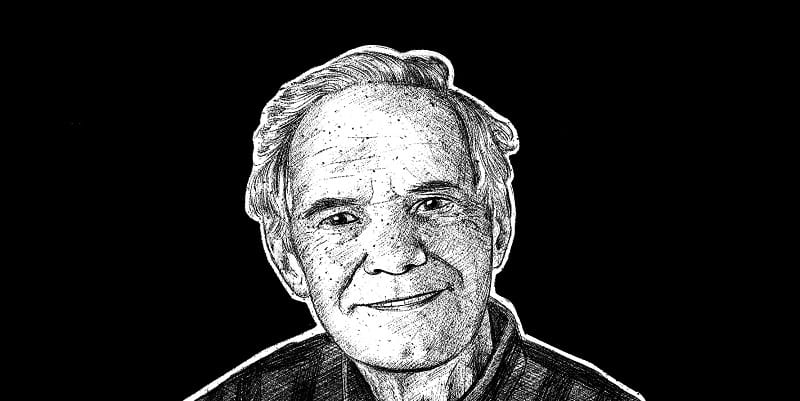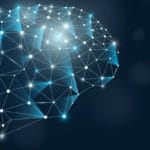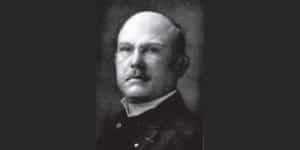Ulric Neisser biography, quotes and books

Ulric Neisser (Ulric Richard Gustav Neisser: December 8, 1928 – February 17, 2012) was a German-American psychologist and professor at Cornell University. Ulric Neisser was also a member of the American National Academy of Sciences. He has been called the father of cognitive psychology. He mainly conducted research into perception and memory (information processing). These are also the subjects of most of his publications.
Ulric Neisser biography
Ulric Richard Gustav Neisser was born in Kiel, Germany. His father’s name was Hans Neisser, a prominent Jewish economist. His mother’s name was Charlotte, a Catholic woman with a degree in sociology.
Ulric had an older sister, Marianne. He was a heavy kid and was soon nicknamed ‘Der kleine Dickie’ (the little fatty). Later this became Dick.
Ulric Neisser foresaw that Hitler had far-reaching plans for Germany and took his family to England. A few months later, they emigrated to the United States and settled in New York.
Growing up in the United States, Neisser made every effort to adapt and succeed in society. In particular, he had an interest in baseball, something that recurred later in life.
He himself argued that baseball played an indirect but important role in his interest in psychology. His attraction to the sport later led him to the idea of a flashbulb memory.
University days of Ulric Neisser
Ulric was admitted to Harvard University in the late 1940s and graduated summa cum laude in psychology in 1950. He then received his master’s degree from Swarthmore College. Ulric preferred this university because Wolfgang Kohler was a member of the faculty there.
Later, Neisser stated that he had always felt some degree of sympathy for underdogs. Perhaps that led him to want to go to this underdog psychology school.
Instead of Wolfgang Kohler, he worked on Swarthmore with Henry Gleitman. Neisser received his PhD in experimental psychology in 1956 and published a dissertation in the field of psychophysics.
He then became an instructor at Harvard and had contacts at Brandeis University, where Abraham Maslow, in particular, proved valuable in broadening his intellectual horizons.
During his time at Harvard, Neisser also became friends with Oliver Selfridge. Selfridge was a talented young computer scientist at the Lincoln Laboratories of the Massachusetts Institute of Technology (MIT).
Selfridge was a proponent of machine intelligence, something that was unusual at the time. People clung to the known and the ‘real world’.
Selfridge and Neisser worked together to develop the pandemonium model for pattern recognition.
Challenger disaster
In 1986, a day after the Challenger space shuttle disaster, Professor Ulric Neisser had his students write down where they were when they heard about the explosion and how they felt about it.
2.5 years later, he asked the students to share the same information. Less than 1 in 10 students had shared the same information as before.
Still, they were all pretty sure their memories were correct, despite seeing the original notes. This phenomenon is also known as false memory syndrome and has been studied by Sigmund Freud and Pierre Janet.
After teaching at Emory University and the University of Pennsylvania, Neisser eventually settled in Cornell, where he lived and worked until his retirement.
Ulric Neisser died of Parkinson’s disease on February 17, 2012 in Ithaca, New York.
Contribution to cognitive psychology
Neisser has made significant contributions to the research of perception and memory. He argued that a person’s internal mental processes can be mapped, measured and analyzed.
In 1967 Ulric Neisser published Cognitive Psychology, which was later said to be an attack on behavioral psychology paradigms.
Cognitive Psychology brought Neisser fame and recognition in his field. He also published Cognition and Reality, another unconventional publication with radical ideas. Neisser stated, for example, that memory is largely reconstructed. So memory is not a snapshot.
There are surveys in which Neisser ranks as the 32nd most cited psychologist in the twentieth century.
Ulric Neisser quotes
- “Attention is not a mysterious concentration of psychic energy; it is simply an allotment of analyzing mechanisms to a limited region of the field. To pay attention to a figure is to make certain analyses of, or certain constructions in, the corresponding part of the icon.”
- “To deal with the whole visual input at once, and make discriminations based on any combination of features in the field, would require too large a brain, or too much “previous experience” to be plausible.”
- “Paying attention is not just analyzing carefully; rather, it is a constructive act… What we build has only the dimensions we have given it.”
- “The fact that the span of apprehension averages only four or five… probably results from the high rate of encoding. In a tachistoscopic experiment the subject must read the fading icon as rapidly as possible.”
- “If we allow several figures to appear at once, the number of possible input configurations is so very large that a wholly parallel mechanism, giving a different output for each of them, is inconceivable.”
- “Cognitive processes surely exist, so it can hardly be unscientific to study them.”
- “The term “cognition” refers to all processes by which the sensory input is transformed, reduced, elaborated, stored, recovered, and used. It is concerned with these processes even when they operate in the absence of relevant stimulation, as in images and hallucinations. Such terms as sensation. perception. imagery. retention. recall. problem-solving. and thinking. among others. refer to hypothetical stages or aspects of cognition.”
Publications and books
- 2000. Memory observed: Remembering in natural contexts. Macmillan.
- 2000. Language-dependent recall of autobiographical memories. Journal of Experimental Psychology: General, 129(3), 361.
- 1997. Rising scores on intelligence tests: Test scores are certainly going up all over the world, but whether intelligence itself has risen remains controversial. American scientist, 85(5), 440-447.
- 1997. The conceptual self in context: culture experience self understanding (Vol. 7). Cambridge University Press.
- 1996. Intelligence: knowns and unknowns. American psychologist, 51(2), 77.
- 1996. Remembering the earthquake: Direct experience vs. hearing the news. Memory, 4(4), 337-358.
- 1995. Criteria for an ecological self.
- 1994. Self-narratives: True and false. The remembering self: Construction and accuracy in the self-narrative, 6, 1-18.
- 1994. The remembering self: Construction and accuracy in the self-narrative (No. 6). Cambridge University Press.
- 1994. Multiple systems: A new approach to cognitive theory. European Journal of Cognitive Psychology, 6(3), 225-241.
- 1993. Childhood amnesia and the beginnings of memory for four early life events. Journal of Experimental Psychology: General, 122(2), 155.
- 1993. The self perceived. Cambridge University Press.
- 1992. Phantom flashbulbs: False recollections of hearing the news about Challenger.
- 1989. Concepts and conceptual development: Ecological and intellectual factors in categorization (No. 1). CUP Archive.
- 1987. From direct perception to conceptual structure. Concepts and conceptual development: Ecological and intellectual factors in categorization, 11-24.
- 1984. Interpreting Harry Bahrick’s discovery: What confers immunity against forgetting?.
- 1983. Point of view in personal memories. Cognitive psychology, 15(4), 467-482.
- 1981. John Dean’s memory: A case study. Cognition, 9(1), 1-22.
- 1976. Skills of divided attention. Cognition, 4(3), 215-230.
- 1975. Selective looking: Attending to visually specified events. Cognitive psychology, 7(4), 480-494.
- 1964. Visual search. Scientific American, 210(6), 94-103.
- 1963. Decision-time without reaction-time: Experiments in visual scanning. The American journal of psychology, 76(3), 376-385.
- 1963. The multiplicity of thought. British journal of psychology, 54(1), 1-14.
- 1963. The Imitation of Man by Machine: The view that machines will think as man does reveals misunderstanding of the nature of human thought. Science, 139(3551), 193-197.
- 1963. Searching for ten targets simultaneously. Perceptual and motor skills, 17(3), 955-961.
- 1962. Hierarchies in concept attainment. Journal of Experimental Psychology, 64(6), 640.
- 1960. Pattern recognition by machine. Scientific American, 203(2), 60-69.
How to cite this article:
Janse, B. (2022). Ulric Neisser. Retrieved [insert date] from Toolshero: https://www.toolshero.com/toolsheroes/ulric-neisser-biography/
Original publication date: 11/04/2022 | Last update: 12/28/2023
Add a link to this page on your website:
<a href=”https://www.toolshero.com/toolsheroes/ulric-neisser-biography/”>Toolshero: Ulric Neisser</a>











